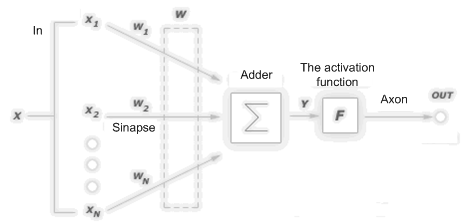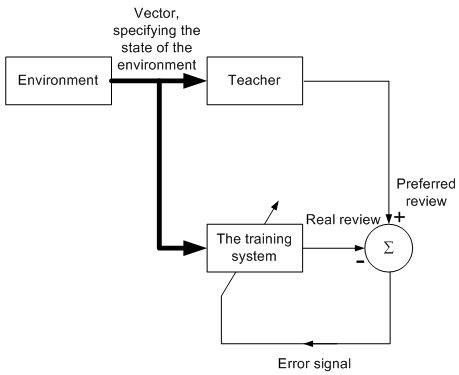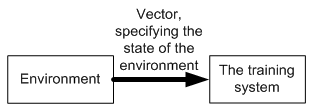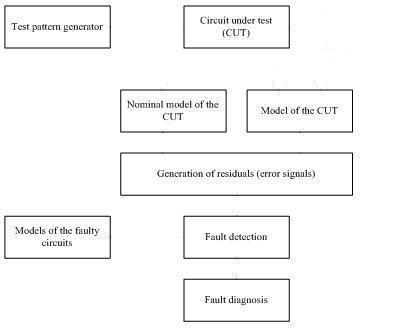Abstract
Content
- Introduction and theme urgency
- 1. Goal and tasks of the research
- 2. Classification of diagnostic process
- 3. Neural networks and methods of their training
- 4. Structure of develop method
- Conclusion
- References
Introduction and theme urgency
Now the CIS countries, particularly Ukraine, uses a large number of analog computers, as up to date, and obsolete. Replacing the analog instruments coming out of the system, the new are expensive, so there is a need in their diagnosis and repair. Analysis of the domestic market and the CIS countries reveals lack of existing analog systems diagnosis devices with fault isolation. On the world market such systems exist, but their cost is very high. Therefore, the task of developing such systems is an urgent diagnosis.
Neural networks are one of the areas of research in artificial intelligence. The most important feature of them — is that they can change their behavior depending on the environment. To date, there are many algorithms for training neural networks.
Neural networks are essential for solving some problems that bad or do not handle conventional computing systems. In this paper we propose several algorithms for training neural network-based solution to the problem of parameter identification of elements of analog devices in order to detect errors in them.
1. Goal and tasks of the research
The goal of this study is to develop a method training neural networks, oriented to solution of the problem of identification of parameters of elements of linear analog devices.
In order to achieve a given goal, in the work following tasks are solved:
- a study of existing methods of training neural networks;
- development of neural network structure, oriented to solution of the problem of parameter identification and development of a method of teaching;
- development of software and hardware training neural networks;
- experimental studies.
2. Classification of diagnostic process
Upon designation by the diagnostic process for analog circuits can be divided into three main categories:
- the removal of the characteristics of the scheme in order to determine compliance with its specifications;
- diagnosis — determining the cause of failure after specified, that scheme, which is diagnosed, is faulty;
- factory testing — performed to test the output of large volumes of circuits.
3. Neural networks and methods of their training
Model of neuron, underlying the neural network is shown in Fig. 1 [10].

Figure 1 – Model of of artificial neuron
There are two approaches to training of neural networks: training with teacher and training without a teacher.
Training a neural network with the teacher assumes that each input vector from the training set there is the necessary value of the output vector, called the target. Together they are called a training pair. In Fig. 2 shows a block diagram illustrating a learning algorithm "back propagation" with a teacher [8].

Figure 2 – Block diagram of training with a teacher
Training a neural network without a teacher is much more plausible model of training from the perspective of the biological roots of artificial neural networks. The training set consists only of input vectors (Fig. 3) [8].

Figure 3 – Block diagram of training without a teacher
4. Structure of develop method
The basic idea is to compare the test circuit with a mathematical model that does not contain errors and implemented using a simple layered neural network trained with error back-propagation algorithm.
Testing is performed through the main inputs and outputs of the circuit. This reduces the number of tested and reference circuits and parts, and thus, reduce the structure of the model tested. Figure 4 shows a simplified system of the proposed fault diagnosis of analog IC that uses a simulated detection of errors and their subsequent isolation.

Figure 3 – Display of the proposed testing strategy
(animation: 6 shots, 7 cycles repeat, 122 kb)
The procedure of the proposed diagnosis of the simulated error detection can be divided into three stages [1]:
- Generating a signature.
- Generation of the projected errors (wrong signals, signatures, residues).
- Detection and isolation of fault.
Conclusion
The existing analogue system diagnosis is not always effective, and high-grade analog systems diagnosis has not yet been developed. Therefore, the task of developing such a system is urgent.
Based on these studies is planned to develop an experimental subsystem training neural networks, oriented to solution of the problem of identification of parameters of elements of analog devices based on the FPGA.
Important notice
In writing this abstract master's work is not yet complete. Final completion: December 2012. Full text of the work and materials on the subject may be obtained from the author or his scientific adviser after that date.
References
- Kabisatpathy P. Fault detection and diagnosis in analog integrated circuits using artificial neural network in a pseudorandom testing scheme / Kabisatpathy P., Barua A., Sinha S. / / 3rd International Conference on Electrical & Computer Engineering ICECE 2004, 28-30 December 2004, Dhaka, Bangladesh, — pp. 52-55.
- Angeli C. On-Line Fault Detection Techniques for Technical Systems: A Survey. [Electronic resource] — Mode of access: http://www.tmrfindia.org/ijcsa/v1i12.pdf
- Zhaobo Zhang, Sule Ozev. Parametric Fault Diagnosis for Analog Circuits Based on Neural Networks. [Electronic resource] — Mode of access: http://people.ee.duke.edu/~zz18/data/NATW08.pdf
- Miona Andrejevic Stosovic, Vanco Litovski. Electronic Circuits Diagnosis using Artificial Neural Networks. [Electronic resource] — Mode of access: http://cdn.intechopen.com/pdfs/6641/InTech-Electronic_circuits_diagnosis_using_artificial_neural_networks.pdf
- Zhao Xiang, Xiao Deyun. Fault diagnosis based on the fuzzy-recurrent neural network. [Electronic resource] — Mode of access: http://www.ajc.org.tw/pages/paper/3.2PD/2FN-00-2.PDF
- Krzysztof Jemielniak. Tool Wear Monitoring by Means of Artificial Neural Networks. [Electronic resource] — Mode of access: http://www.eng.utoledo.edu/pmmc/issue7-4.pdf
- Babu B.V., Shailesh M. Adaptive networks for fault diagnosis and process control. [Electronic resource] — Mode of access: http://discovery.bits-pilani.ac.in/~bvbabu/Annbpcc2k.pdf
- Хайкин С. Нейронные сети: полный курс, 2-е изд., Испр.: Пер. с англ. — М.: ООО «И.Д. Вильямс », 2006. — 1104с.
- Agrawal V.D. Essentials of electronic testing for digital, memory and mixed-signal VLSI circuits / VD Agrawal, M. L. Bushnell / / Boston: Kluwer Academic Publishers, — 2000, 650p.
- Предыстория искусственного интеллекта. Часть IV. Неврология. [Electronic resource] — Mode of access: http://www.aiportal.ru/articles/neural-networks/model-neuron.html
